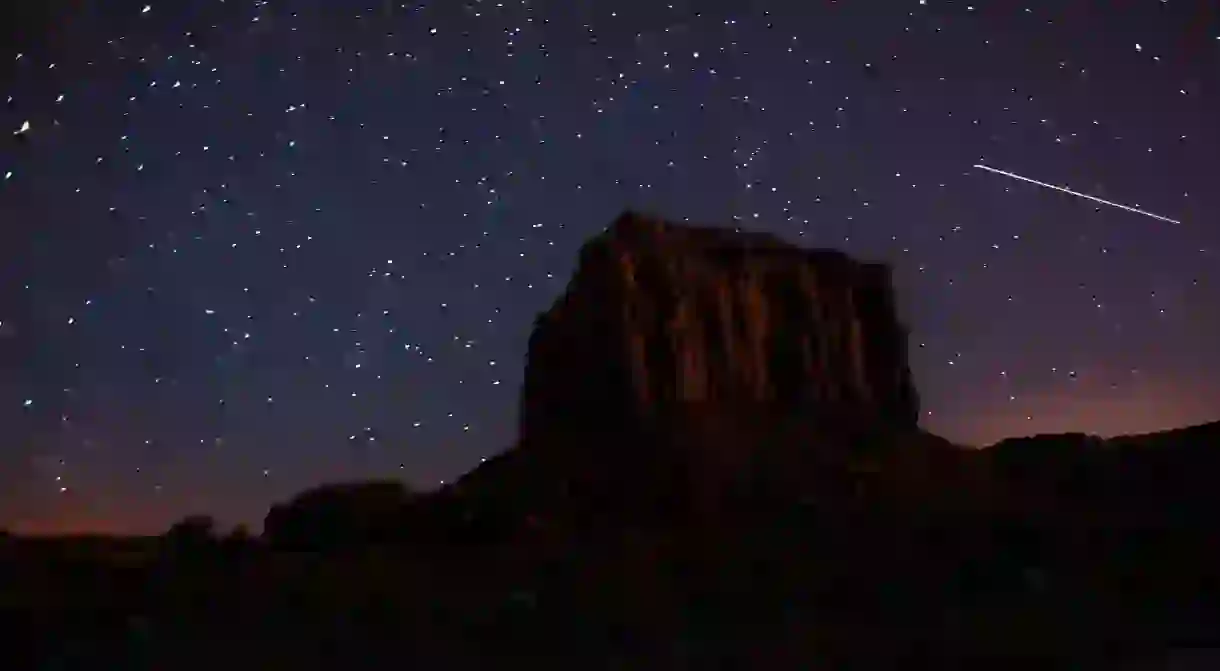How To Be an Amateur Stargazer

For most of us, at the moment, travelling isn’t an option. However, you only need to step outside after dark and look up at the night sky to explore the universe from your very own backyard or balcony. Here’s how to read the stars.
Contrary to popular belief, stargazing doesn’t require a fancy telescope or even high-powered binoculars. You can see plenty of stars and planets with your own eyes, and even more so now that shuttered businesses and strict travel bans have cleared the air of pollution during coronavirus lockdowns. And with the streets blissfully quiet, there are fewer lights to distract you.
The global lockdown has had such a huge impact on clearing the air that the European Space Agency measured a 40% reduction in nitrogen dioxide concentrations across three European countries (France, Italy and Spain) in March.

If you’re tiring of staring at your phone, television or laptop screen, stargazing may well be the perfect new nighttime hobby for you. Here are a few tips and tricks to get you started.
Where to start
Brightly lit big cities are not normally the best places for stargazing. But a city in lockdown will work just fine. Pick a clear evening and find a spot that’s dark. Wait until night has fully fallen — ideally at least an hour after sunset. If you want to see lots of stars, the nights before and after the new moon (when the moon is shadowed by the sun) are the best times.

Look up. There’s no rush to learn everything right away. Spend some time simply looking and admiring the moon (if it’s visible) and the stars. The rest will come later.
What to look for
When you’re ready to identify stars, constellations, and planets, it’s time for a star chart. Search online for star charts — either for the Northern or Southern Hemisphere, depending on where you live — and print one out. The chart provides a guide for how and where to view particular constellations and planets at that particular time.
It’s important to choose the correct star chart for the current month. In April 2020, for example, Venus is particularly bright in the evening in the Northern Hemisphere, while Mercury is clearly visible just before dawn in the Southern Hemisphere.

Or use an electronic star chart compatible with your phone or tablet, like the interactive chart from Sky & Telescope. Sky & Telescope also offers a handy online guide filled with tips for first-time stargazers.
The internet contains an infinite number of resources on amateur astronomy and how to read star charts. YouTube is a good place to start. Get your bearings before you begin – you’ll need to know which direction you’re facing (north, south, east, west) in order to read a star chart accurately.
What do I need?
The naked eye can see plenty of stars, and once you’ve got to grips with a star chart you’ll be able to get accustomed to reading the night sky. But if you want to explore further, there’s no need to order an expensive telescope. A simple pair of binoculars will bring the stars into much sharper focus, along with the craters of the moon. (Note that unlike stars, which are best viewed after twilight, the moon is best viewed around twilight when the glare is not as bright.)
Earthsky.org provides some great tips for viewing the night sky with binoculars.

Apps for a little extra help
Although some might argue that technology takes a bit of the magic out of stargazing, there are dozens of astronomy apps which allow users to point their phones at the sky and identify the stars and constellations on the screen. Popular free apps include the NASA app, Solar Walk, and Sky Safari. Stellarium, a popular astronomy software programme, offers a useful mobile app for about £2.50.













